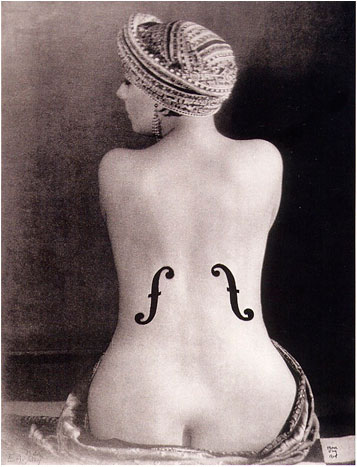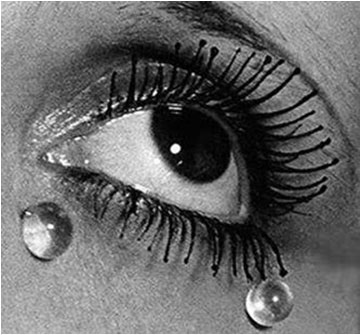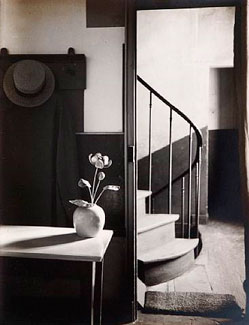
Le violon d'Ingres 1924. Man Ray.
Era between the two world wars encompassed the full potential of photography. Enriched by expanded roles in journalism, advertising, and publicity. Accepted by avante-garde movements in the graphic arts. Explores the relationship of the “new vision”.
Emergence of wide variety of techniques, styles and approaches.
Many photographers became conscious of the effects of technology, urbanization, cinema, and graphic art on camera expression.
Aesthetic concepts associated with Constructivism, Dadaism, Cubism, and Surrealism inspired a climate of experimentation, with photo-collage, montage, cameraless images, nonobjective forms, unusual angles, and extreme close-ups marked expression of era.
Photographers also took note of Freudian and related theories of the psyche.
In Europe, the new vision was nurtured by the complex artistic and social tendencies that emerged following the revolutionary uprisings at the end of the first World War.
The German Bauhaus- a school of architecture and design-and the German Work Alliance viewed artistic expression as concerned with analysis and rational reconstruction of industrial society rather than as a means of producing unique decorative objects based on personal feelings or experiences for an elite class.
Art activity conceived as a way to improve the lives of ordinary people through the redesign of their physical and mental environments.

Glass Tears (variant), 1930. Man Ray.
The artist emerged as an individual who “remained true” to reality in order to reveal the true face of our time.
The applied arts were considered as important as the “fine” arts of painting and sculpture; respect for machine technology led to a high regard for both printing press and cameras as the most effective visual instruments of the age.
Dadaists
Dadaists urged that the art of the past be jettisoned; that new themes and new forms be found to express irrational nature of society.
Opened fields for all kinds of visual experimentation, including production of cameraless photographic images “photogenic drawing”-exposing real objects placed directly on light-sensitive paper.
Earliest examples made by German artist Christian Schad in 1918. Employed a variety of substances and light sources to create nonrepresentational images.
American Man Ray undertook experiments called Rayographs. Arranged translucent and opaque materials on photographic paper.
Lucia Moholy and Laszlo Nagy were active in Bauhaus in Germany and held that, like other products produced by machine, photographic images-cameraless and other-should not deal with conventional sentiments or personal feelings but should be concerned with light and form.
Camera Work

Chez Mondrian, 1926. Andre Kertesz.
Camera work was seen as the result of both craft and vision, a concept embodied in the theories and programs of Constructivism and the Bauhaus.
Andre Kertesz, Marian and Witold Dederko, Clarence John Laughlin seemed to signify the modern urban life as inhumane.
Photographers influenced by Surrealism sought to express intuitive perceptions through found symbols as well as accidental reflections. Manuel Alvarez Bravo-Mexico.
The new vision invigorated straight photography by presenting the known world in uncharacteristic ways.


